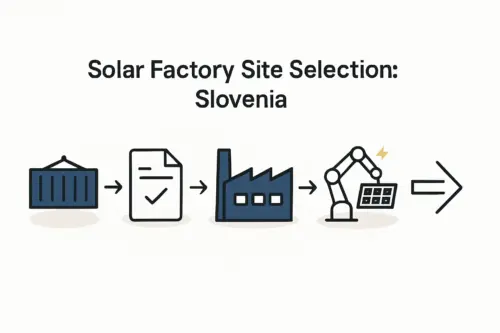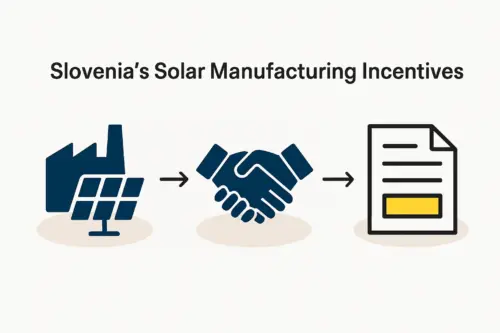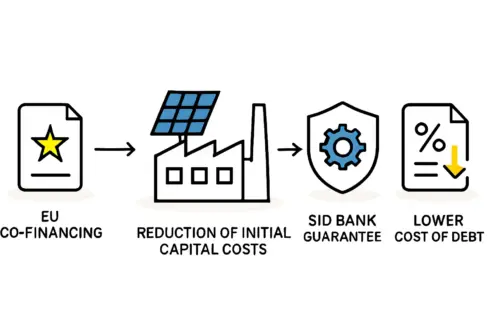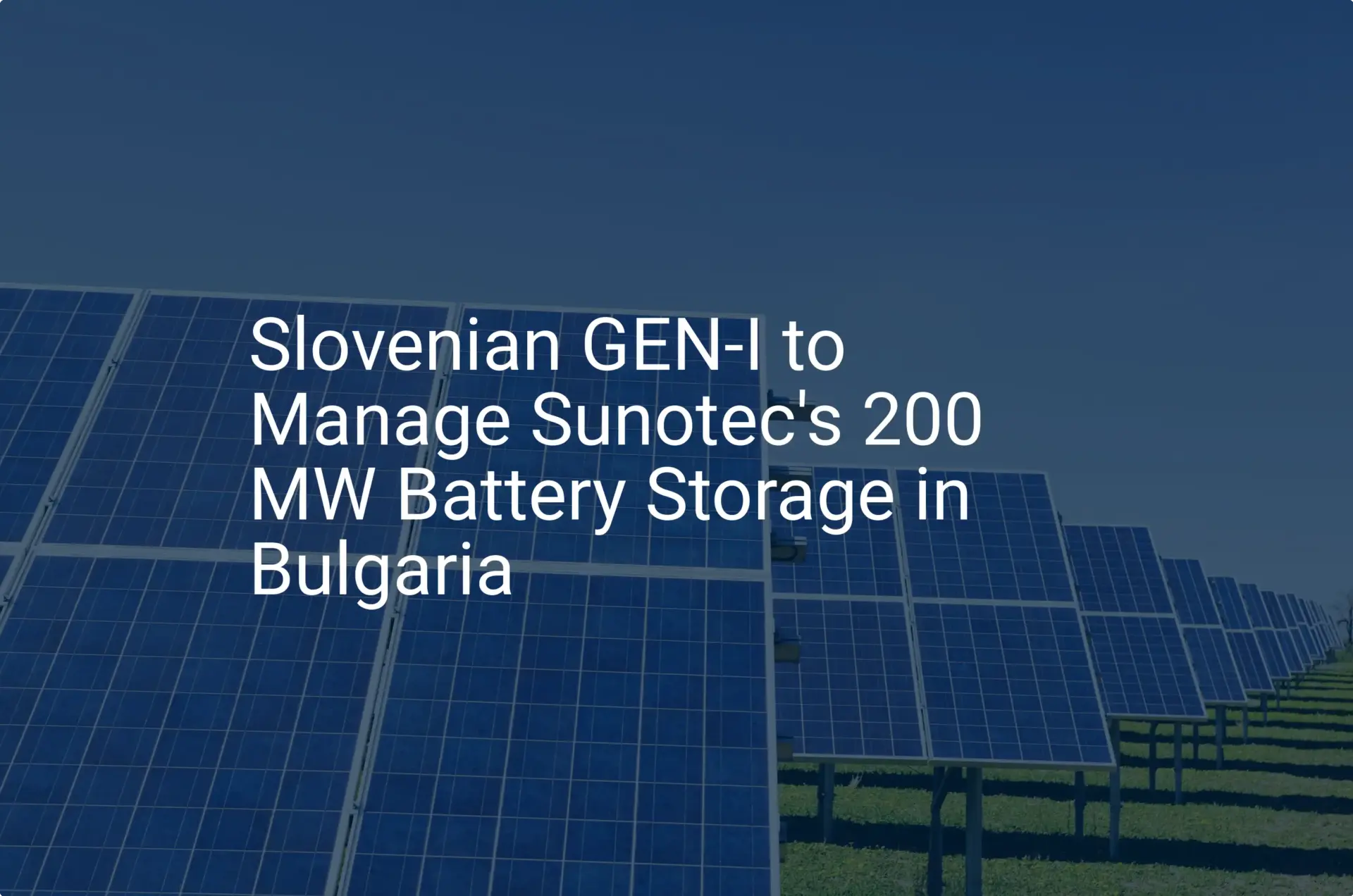Leveraging the Port of Koper for an EU-Focused Solar Module Supply Chain
An entrepreneur planning to establish a solar module factory in Europe often begins by studying a map. At first glance, the logical points of entry are the massive northern ports of Rotterdam, Hamburg, or Antwerp—historic hubs of European commerce. For a business focused on the rapidly growing solar markets of Central and Eastern Europe, however, the most efficient gateway may not be in the north at all. It may lie on the Adriatic coast, in Slovenia.
This analysis explores the strategic advantages of the Port of Koper as a logistical hub for a solar module manufacturing supply chain. We will outline how this southern entry point can reduce transit times, lower inland transportation costs, and provide a competitive edge for new market entrants targeting the European Union.
Why Port Selection is Crucial for Solar Manufacturing
Before a single solar cell is tabbed and strung, a critical business decision must be made: how will raw materials arrive, and how will finished products be dispatched? This choice of a primary seaport has far-reaching effects on a company’s operational efficiency, cost structure, and time-to-market.
A solar module assembly operation is, at its core, a business of logistics. It involves two distinct flows:
-
Inbound Logistics: The consistent importation of raw materials. Key components such as solar cells, specialized glass, aluminum frames, and encapsulants are often sourced from manufacturers in Asia.
-
Outbound Logistics: The reliable distribution of finished solar modules to customers, who are typically project developers, distributors, and installers across the European continent.
An inefficient port strategy can lead to higher inventory costs, production delays, and eroded profit margins. Selecting the right logistical hub is therefore a foundational element of a successful solar module manufacturing line.
A Tale of Two Routes: Northern vs. Southern European Ports
The choice of port shapes the entire supply chain. While Northern Europe’s ports are world-class, they present specific challenges for businesses focused on markets east of Germany.
The Conventional Approach: Rotterdam, Hamburg, and Antwerp
These ports are the largest in Europe by cargo volume, offering immense capacity and extensive shipping line networks. For decades, they have been the default entry point for goods destined for the continent.
However, their geographical location presents a significant hurdle for cargo destined for countries like Austria, Hungary, Czechia, Slovakia, or Southern Poland. Once a container is unloaded in Rotterdam, it must still travel over 1,000 kilometers by rail or truck to reach these key markets, adding considerable time and expense to the journey.
Ready to make big Profits?
The solar Industry is Booming
WE HELP NEWCOMERS to the solar industry start their own solar module production line. Customers can make BIG PROFITS by selling modules and finding investors, without wasting money and time on things they don't need!
The Southern Gateway: The Case for the Port of Koper
The Port of Koper in Slovenia offers a compelling alternative. As the largest container terminal in the Adriatic Sea, it has quietly become a critical gateway to Central and Southeastern Europe. Its strategic advantage comes down to simple geography.
For a vessel traveling from Asia via the Suez Canal, the sea route to Koper is approximately 2,000 nautical miles shorter than the route to Hamburg. This translates into a significant reduction in transit time—typically five to seven days. For a business managing just-in-time inventory for raw material sourcing, this time saving is a powerful competitive advantage.

Analyzing Koper’s Key Logistical Advantages
The benefits of using the Port of Koper extend beyond the maritime journey. The port is integrated into a highly efficient inland transportation network built to serve the heart of Europe.
Reduced Maritime Transit Times
The first key benefit is the shorter sea voyage from major Asian ports. This not only speeds up the supply chain but can also lead to lower freight costs and reduced fuel consumption, contributing to a more sustainable logistics model.
Efficient Inland Distribution Network
The Port of Koper is the starting point of the Baltic-Adriatic Corridor, one of the most important trans-European transport axes. It offers direct and frequent rail connections to major industrial hubs:
- Austria (Vienna, Graz, Linz): Daily rail services connect Koper to Austria, a mature solar market.
- Hungary (Budapest): The port is a primary maritime gateway for Hungary, an emerging solar powerhouse.
- Slovakia (Bratislava, Košice): Efficient links serve the growing industrial base.
- Southern Germany (Munich, Nuremberg): Koper provides a viable alternative to northern ports for supplying one of Europe’s largest solar markets.
This extensive rail network is crucial for moving both inbound containers of raw materials and outbound pallets of finished solar modules cost-effectively and reliably.

Proximity to Key and Emerging EU Solar Markets
A solar module factory in Slovenia, Croatia, Hungary, or Austria can leverage Koper’s proximity to serve its target markets with unparalleled speed. Finished products can be delivered to customers across Central and Eastern Europe within 24-48 hours by truck, drastically reducing order fulfillment times compared to a factory near a northern port. This responsiveness is a significant selling point in a competitive market.
A Practical Example: Supply Chain for a 50 MW Solar Factory
To understand the real-world impact, consider the logistical requirements for a typical 50 MW per year turnkey solar factory.
-
Inbound Materials: A 50 MW facility requires approximately 250-300 forty-foot containers of raw materials (cells, glass, frames, etc.) annually. Saving five days of transit time on each shipment means a cumulative saving of over 1,250 shipping days per year, significantly reducing the amount of capital tied up in inventory.
-
Outbound Modules: The same facility will produce around 140,000 modules per year. If the primary markets are in Austria and Hungary, dispatching from a nearby factory connected to Koper is far more efficient than shipping from Northern Europe.
Based on data from J.v.G. Technology GmbH projects, optimizing freight and logistics can impact the final cost-per-watt of a solar module by a measurable margin. Factoring this into the initial investment for a solar factory is a mark of sophisticated business planning.
Frequently Asked Questions (FAQ)
Why is the Port of Koper less known than Rotterdam or Hamburg for this purpose?
While Rotterdam and Hamburg are larger in overall tonnage, Koper has specialized as a highly efficient gateway for container traffic to Central and Eastern Europe. Its growth has been driven by strategic investments in rail infrastructure, making it the preferred port for many global brands serving these specific markets.
What specific raw materials for solar modules are typically imported by sea?
The main components imported in bulk are solar cells, front glass, backsheets or rear glass, aluminum frames, junction boxes, and encapsulant films (EVA or POE). These are sourced from specialized global suppliers and shipped in standard ocean containers.
How does using Koper impact customs clearance and EU market access?
Slovenia is a full member of the European Union and the Schengen Area. Once goods are cleared through customs at Koper, they can move freely throughout the EU without further border checks. The customs procedures are standardized and as efficient as those in any other major EU port.
Are there any disadvantages to consider with a Southern European port strategy?
The primary consideration is the final destination of the goods. If a manufacturer’s key markets are in the UK, Scandinavia, or Northern France, then a northern port like Antwerp or Rotterdam would remain the more logical choice. The Koper strategy is most powerful for businesses targeting the geographical core of the EU, from Southern Germany to the Balkans.
Integrating Logistics into Your Business Plan
The decision of where to locate a solar module factory and how to structure its supply chain is as important as the choice of production technology itself. While traditional logistics routes have their merits, a detailed analysis often reveals more efficient alternatives.
For entrepreneurs and investors targeting the strong and growing solar markets of Central and Eastern Europe, the Port of Koper offers a clear and compelling logistical advantage. It reduces shipping times, provides direct inland connections, and can lower overall operational costs.
Building a business plan around this southern gateway can provide a competitive edge from day one, ensuring a new solar venture is built on a solid and efficient logistical footing. Once this framework is in place, ensuring products meet regional standards through processes like EU solar module certification becomes the next critical step.







